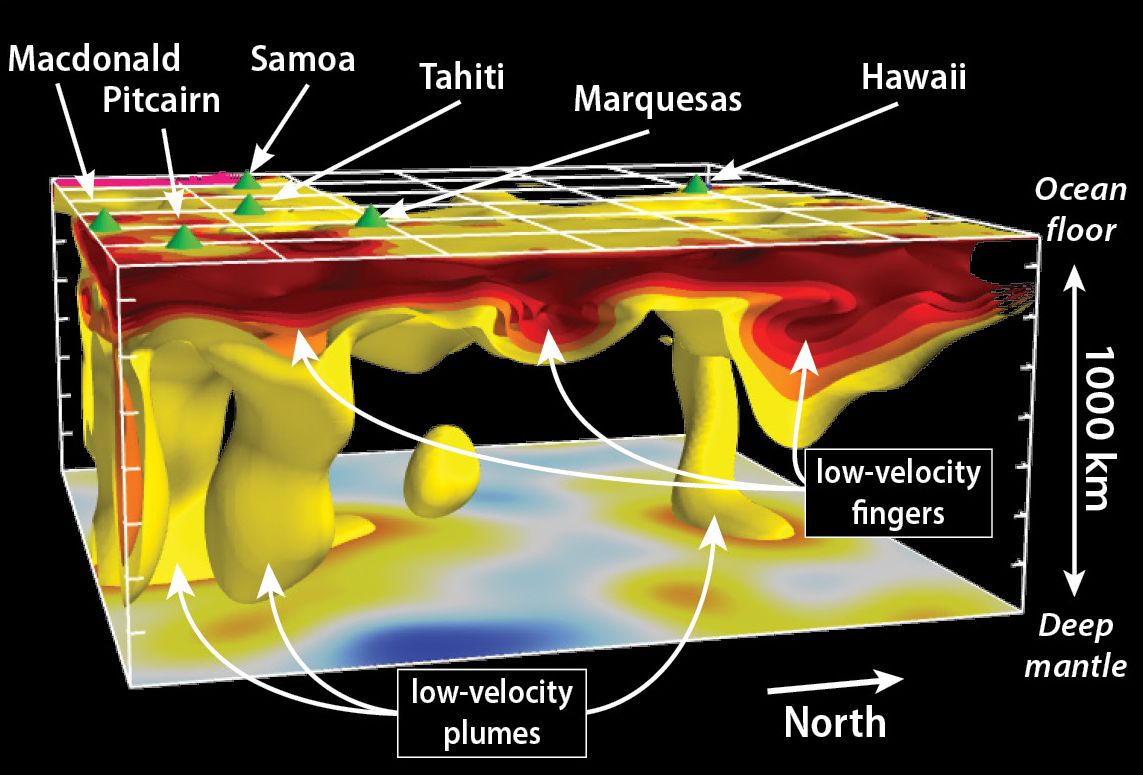
UC Berkeley’s proximity to the Hayward fault means those of us near campus are acutely aware of the volatile earth beneath us. Tectonic plates move, slip, collide, cause earthquakes, and sometimes even open rifts where molten rock wells up from the mantle. It is no surprise, then, that where plates collide, there are often volcanoes. But “hotspot” volcanoes, like those in Hawaii, sometimes pop up smack in the middle of plates. They are fed by vertical plumes of hot rock welling up from the deep mantle, but until now, the forces shaping their sidewinding path to the surface were a mystery.
 Scott French, a graduate student in Barbara Romanowicz’s lab, led a team that used data from over 200 earthquakes to create a sophisticated model of seismic activity. Seismic waves travel quickly through cooler, more viscous rock, and slowly through hotter, less viscous rock. The team used their measurements of velocity to gauge viscosity. They identified massive horizontal finger-shaped swaths of low viscosity roughly 300 kilometers beneath the earth’s surface, where rock flows at glacial speeds. French borrows a classic experiment in fluid dynamics to explain why this occurs, saying, “If you have a fluid between two glass plates, make a hole in one plate, and inject a lower-viscosity fluid, the higher-viscosity fluid will corral it into fingerlike shapes.”
Scott French, a graduate student in Barbara Romanowicz’s lab, led a team that used data from over 200 earthquakes to create a sophisticated model of seismic activity. Seismic waves travel quickly through cooler, more viscous rock, and slowly through hotter, less viscous rock. The team used their measurements of velocity to gauge viscosity. They identified massive horizontal finger-shaped swaths of low viscosity roughly 300 kilometers beneath the earth’s surface, where rock flows at glacial speeds. French borrows a classic experiment in fluid dynamics to explain why this occurs, saying, “If you have a fluid between two glass plates, make a hole in one plate, and inject a lower-viscosity fluid, the higher-viscosity fluid will corral it into fingerlike shapes.”
Similarly, the hot, less viscous rock feeding hotspot volcanoes forms fingers in the upper mantle. At mid-ocean ridges, melting rock continuously forms new tectonic plate, pushing old plate away and generating plate motion. Fingers naturally prefer to flow into the low-pressure zones created beneath these ridges. This explains why fingers align parallel to the movement of tectonic plates, carrying with them material from plumes that feed hotspot volcanoes. By illuminating the interaction of these forces, French’s model demystifies the hotspots’ seemingly out-of-nowhere origins.
This article is part of the Spring 2014 issue.



